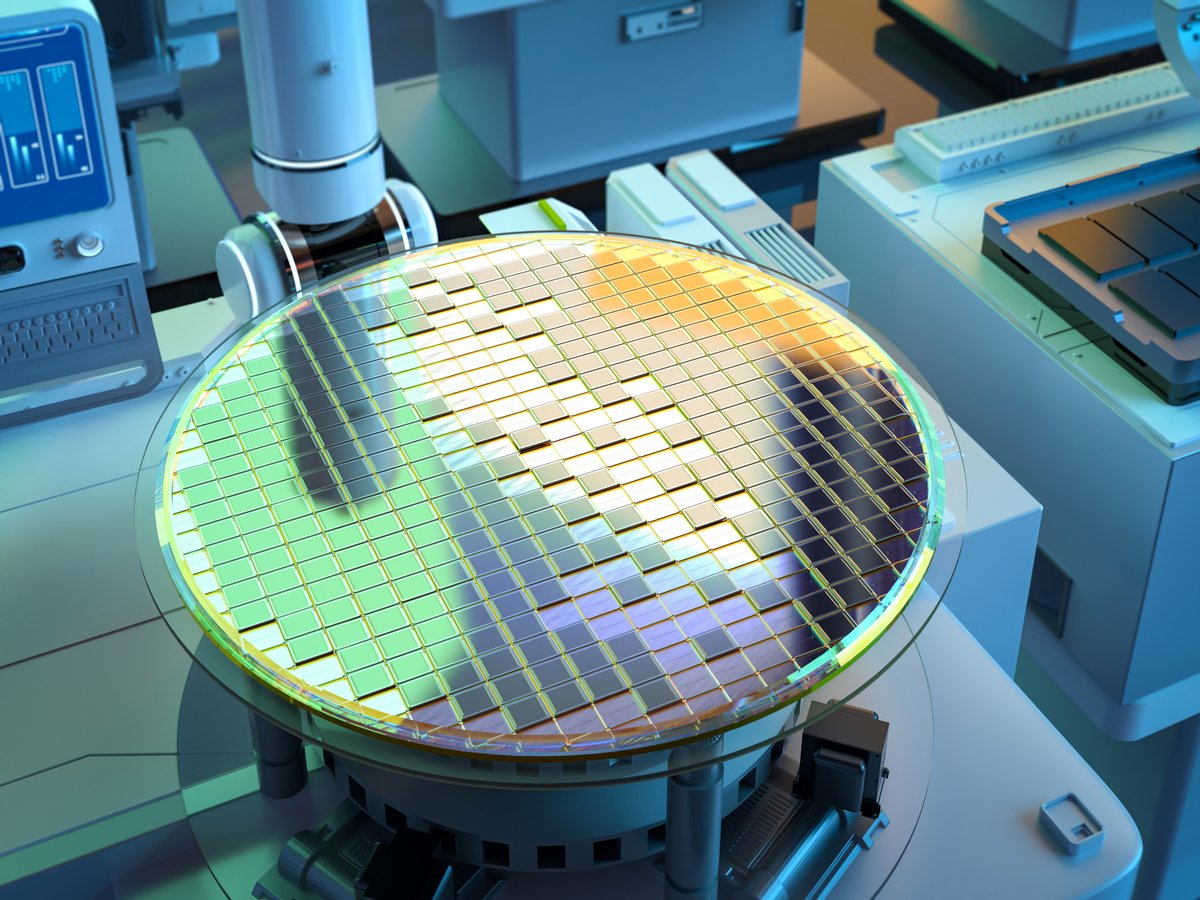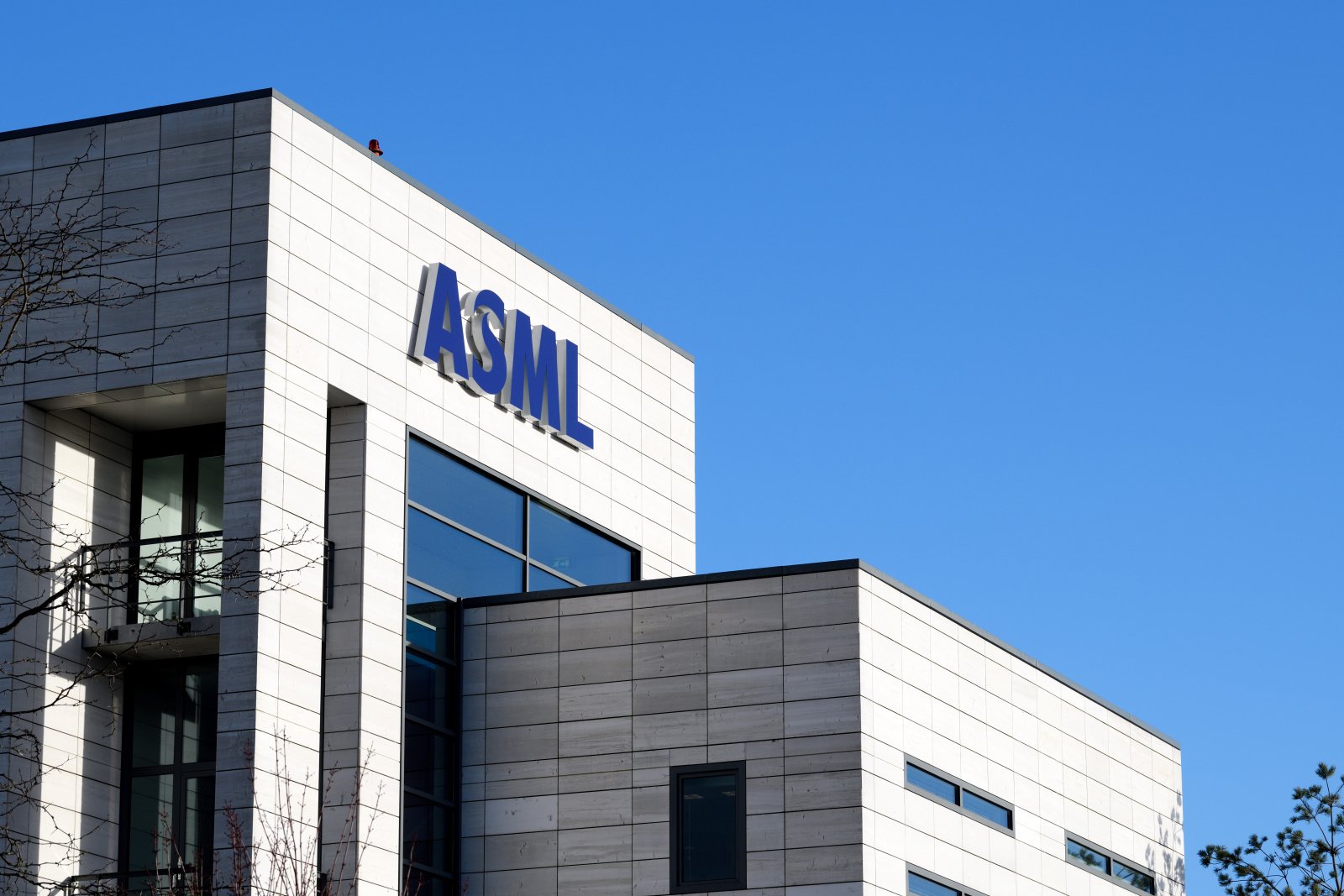ASML (ASML +0.59%), the world's largest producer of lithography systems, is often considered a linchpin and bellwether of the semiconductor market. That's why the Dutch tech giant's stock price nearly tripled over the past five years as the chipmaking market expanded.
It might be tempting to take some profits in ASML in this frothy market, but that might be a major mistake if you're bullish on the semiconductor sector's long-term growth potential. Here are four reasons that ASML should remain one of the best chip stocks to own for the next five years.

Image source: Getty Images.
1. ASML has monopolized the EUV market
ASML's lithography systems are used to optically laser etch circuit patterns onto silicon wafers. All of the world's top foundries -- including Taiwan Semiconductor Manufacturing, Samsung, and Intel -- use its systems to manufacture their chips.
ASML's deep ultraviolet (DUV) lithography systems are used to manufacture older and larger chips. It controls 90% of the DUV market, according to Valuates Report, while its two closest competitors -- Canon and Nikon -- each hold slim 5% shares. These legacy systems cost $5 million to $90 million each.
ASML is also the only producer of extreme ultraviolet (EUV) systems, which are used to manufacture the world's smallest, densest, and most power-efficient chips. Its older "low-NA" EUV systems cost about $220 million, while its newest "high-NA" systems cost more than $400 million. These massive systems require multiple planes to ship.
ASML established its first-mover advantage in the EUV space in the late 1990s. Today, the sky-high costs of developing, manufacturing, and maintaining those systems are preventing any other lithography system makers from entering the market. In other words, it monopolized a crucial chipmaking technology -- which is now required for producing the world's most advanced chips -- long before other semiconductor equipment makers noticed that technological shift.
2. ASML's revenue and margins will keep rising
From 2019 to 2024, ASML's revenue grew at a CAGR of 19% (in euros) as its gross margin expanded from 44.7% to 51.3%. It achieved that top-line growth even as the global economy was rattled by the pandemic, inflation, rising interest rates, trade wars, and geopolitical conflicts.
Its gross margins are still expanding because its monopolization of the EUV market gives it nearly unlimited pricing power. As long as TSMC, Samsung, and Intel want to stay in the "process race" of manufacturing smaller and denser chips, they'll need to keep buying ASML's EUV systems. That also makes it a great play on the booming cloud and AI markets.
By 2030, ASML expects its annual revenue to rise to 44 billion to 60 billion euros ($69.8 billion). The midpoint of that forecast at 52 billion euros ($60.5 billion) would represent a six-year CAGR of 11% from 2024. It also predicts its annual gross margin will reach 56%-60% by 2030. We should take those estimates with a grain of salt, since it can face plenty of unforeseen challenges over the next five years.
But ASML also has a habit of low-balling its long-term estimates and beating them by a mile. Back in 2018, it set a target for generating 15 billion to 24 billion euros ($27.9 billion) in annual revenue by 2025. Yet it easily surpassed the highest estimate by generating 27.6 billion euros in revenue in 2023, which rose another 3% to 28.3 billion euros ($32.9 billion) in 2024. Therefore, I wouldn't be too surprised if it hits its 2030 targets ahead of schedule.
3. ASML can overcome its near-term challenges
ASML's biggest near-term challenge is the protracted trade war between the U.S. and China. ASML was already barred from selling its EUV systems to Chinese chipmakers back in 2019, and its higher-end DUV systems could face similar restrictions as that conflict intensifies.
Some of ASML's top customers could also delay their deployments of high-NA EUV systems as they push their existing low-NA EUV systems to produce smaller chips. Those delayed upgrades, along with the AI market's potential slowdown, could throttle its revenue growth.
But over the next few years, ASML can expand in other markets to curb its dependence on mainland China, which still accounted for over a third of its revenue in 2024. A favorable trade deal between the U.S. and China could also allow it to retain its existing Chinese DUV customers.
As for the delayed high-NA EUV upgrades, the world's top foundries will eventually need to deploy those systems to keep pace with their industry peers. In other words, ASML's near-term challenges are mostly temporary headwinds that shouldn't stunt its long-term growth.

NASDAQ: ASML
Key Data Points
4. ASML's stock is still reasonably valued
ASML's stock might not seem like a bargain at 35 times next year's earnings. However, I believe its monopolization of the EUV lithography market, unmatched pricing power, and tendency to underpromise and overdeliver justify that higher valuation. Therefore, it's one of the best chip stocks to own for the next five years -- especially if you want to profit from the secular expansion of the semiconductor market without investing too heavily in a single chipmaker.




